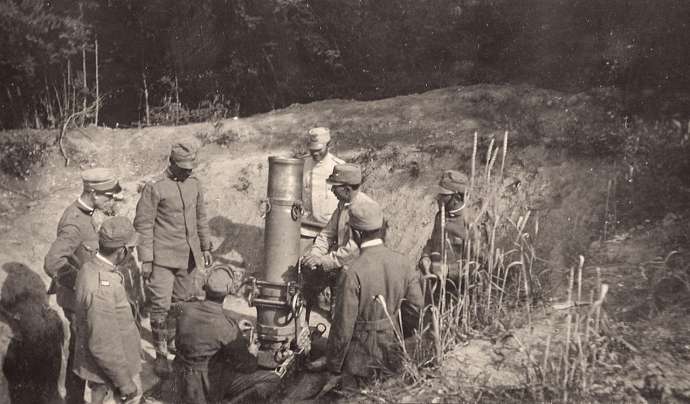STA, 28 July 2022 - The wildfire that raged across Kras in the past two weeks proved to be extraordinarily challenging because the area is littered with thousands of explosive devices from World War I, which may detonate when subjected to extreme heat. Over 500 devices have gone off during the fire which has since been extinguished, but the area remains dangerous.
Experts estimate that the site of the Isonzo Front in World War I remains littered with about 70 kilos of unexploded explosive ordnance (UXO) per square metre [sic].
The wildfire spread across a surface area of 3,500 hectares located on what used to be the Italian-Austrian border in the early 20th century and the site of many World War I battles between the two countries.
The fire detonated hundreds of devices, posing an extraordinary risk for thousands of firefighters who battled the blaze. "Luckily, the explosions took place where we predicted, in the zones we mapped out," Darko Zonjič, the commander of Slovenia's special UXO unit, told the STA.
"The most important thing was that firefighters followed our safety instructions, otherwise there could have been a catastrophe," he said, adding that there had been some "close calls", but luckily nobody had been hurt.
The UXO unit has only just started their work of removing the unexploded ordnance and found over 250 devices weighing a total of 1.4 tonnes. "But we are far from over. Only when the fire is extinguished completely and we will be able to access the burnt down areas, a realistic picture will begin to emerge."
Movement across burnt down areas becomes somewhat safer after the fire had been extinguished for over 48 hours. "But there are still hot spots where explosions can occur. Therefore we are warning that walking across fire sites is still dangerous."
The UXO unit members are continuing their inspection of outer edges of the burnt areas. The majority of ordnance they found so far were Italian and Austrian 75-millimetre cannon grenades, followed by Austrian 100-millimetre grenades.
"We have not yet found 150-millimetre grenades, but we expect to find them at the centre of the fire site under the Veliki Vrh peak. So far we have inspected only a fraction of the burnt area," Zonjič said.
Very big calibre UXO are mostly underground and will only detonate in case of fire, when temperature reaches about 300 degrees Celsius, he added.
Some of the grenades were found in heaps, likely piled together by metal collectors after the war. "They took brass of the grenades, having known already back then which were dangerous and which weren't.
"Mostly these are individual grenades which had not exploded after launch. If these missiles... are not moved they don't go off, that is why we haven't had an accident like this in a long time."
The missiles become dangerous during fires or when untrained individuals start playing with them. People are advised not to move UXO but report their location to the relevant services instead.







